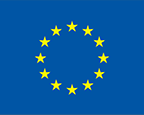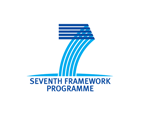What can we do?
One of the major objectives of the ArcRisk project was to prepare strategies for adaptation and for the prevention of adverse health outcomes related to climate-mediated changes in exposure to pollutants in human populations in the Arctic and in Europe. These strategies should be proposed in the context of the responses to the main question defined in the project, namely, how will climate change affect the transport of contaminants both to and within the Arctic, as well as their human health impacts in the Arctic in relation to exposed local populations.
Proposing the above-mentioned strategies is a major contribution of the project to implementation of various EU and international policies with regard to reducing impacts on human health and the environment from various contaminants under climate change scenarios.
The ArcRisk project, being a scientific initiative provided new knowledge on sources, fate, transport and effects of POPs and mercury under changing climate conditions. As such, the project provided a body of information that can be used to improve current policies and strategies on reduction of contaminant effects in the Arctic in the view of climate change. This knowledge should be further analysed in the context of improving of current regulations and possibly definition of new legislation.
Directives and conventions
The ArcRisk project is addressing policies, objectives and targets defined in various EU Directives and regional and international conventions and agreements aimed at the reduction of environmental contaminants and climate change impacts through the development of various options of mitigation and adaptation to climate variability and climate change. These directives and conventions include:
Relevant EU Directives, including the Registration, Evaluation, Authorization and Restrictions of Chemicals (REACH) Directive, the Marine Strategy Framework Directive, the Water Framework Directive (WFD), the Air Quality Directive, the Community Strategy Concerning Mercury, and others, as well as the objectives of, for example, the recently completed Environment and Health Action Plan (2004–2010);
- The Intergovernmental Panel on Climate Change (IPCC);
- The Arctic Council requirements and aims;
- The regional marine conventions, including OSPAR, HELCOM, and MedPOL;
- The contaminant-focused conventions, such as the Stockholm Convention on POPs, and the UNECE LRTAP Aarhus protocols on POPs and Heavy Metals, as well as the objectives of the Parma Declaration on Environment and Health ‘Protecting children’s health in a changing environment’ from the WHO European Region Fifth Ministerial Conference on Environment and Health in May 2010.
In addition, the project results will be relevant to other international bodies (e.g., Nordic Council of Ministers, OECD, European Environment Agency) and authorities, and NGOs involved in establishing, implementing and evaluating their policies on contaminants and human health. Furthermore, the project cooperates closely with the Arctic Monitoring and Assessment Programme (AMAP), the main environmental monitoring programme in the Arctic region.





















